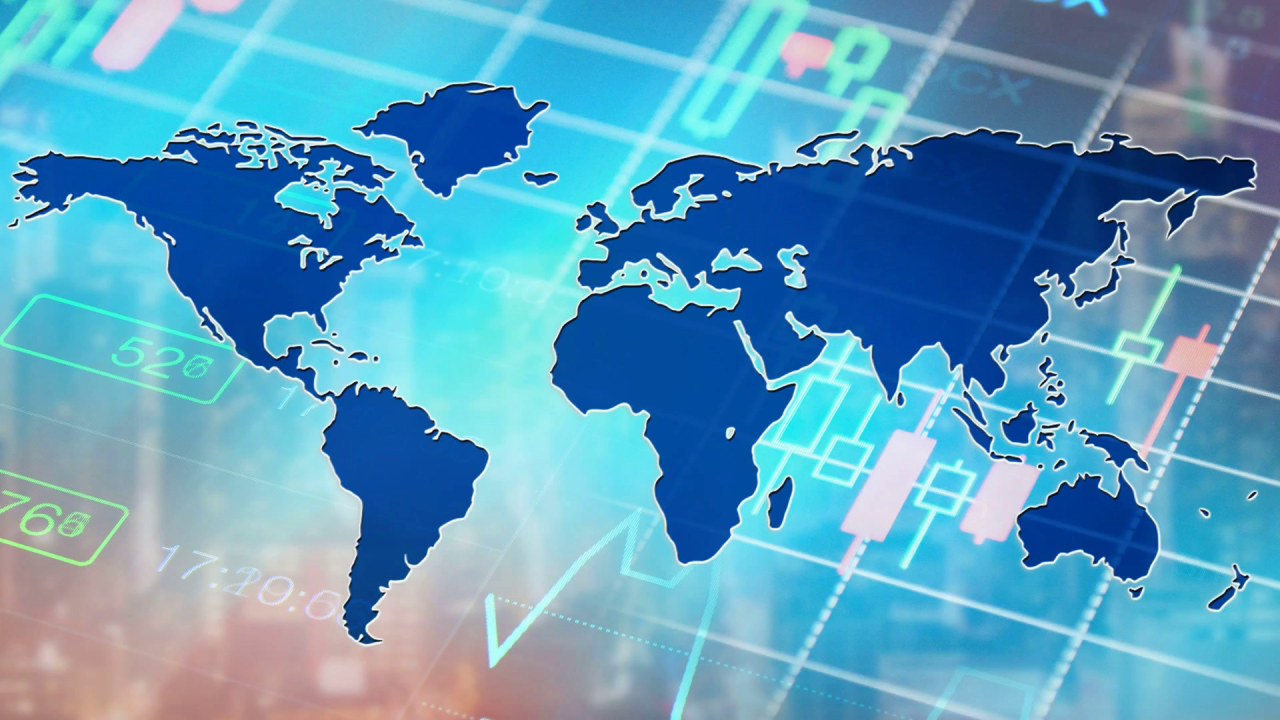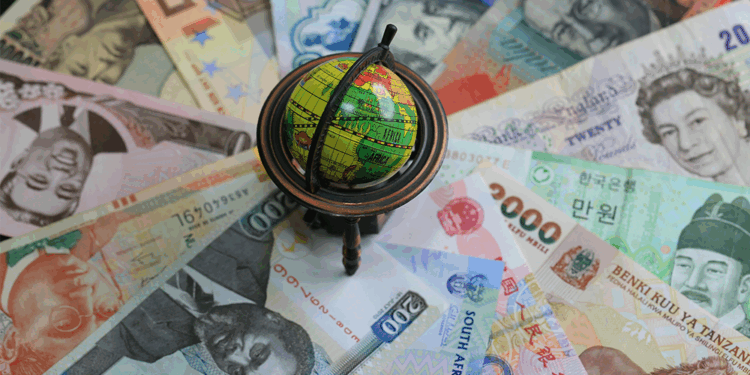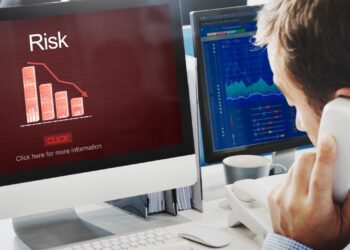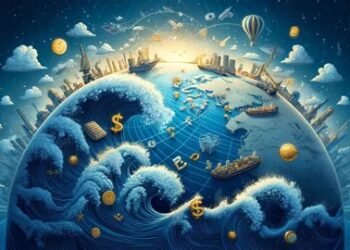The global economic outlook is a complex tapestry woven from myriad threads: geopolitical shifts, technological advancements, environmental pressures, and the evolving dynamics of trade and finance. Understanding these intricate connections is paramount for businesses, policymakers, and individual investors alike. Far from a static picture, the global economy is in a constant state of flux, presenting both formidable challenges and unprecedented opportunities. This extensive guide will delve into the current landscape, analyze the key forces shaping its trajectory, explore regional specificities, and discuss the critical strategies necessary for resilience and prosperity in the years to come. We will examine the lingering effects of recent crises, the rise of new economic powers, and the imperative of sustainable growth in a rapidly changing world.
The Current Economic Pulse

Before projecting into the future, it’s essential to grasp the current state of the global economy. While a precise real-time assessment is impossible due to constant shifts, general trends provide a vital benchmark.
A. Inflationary Pressures and Interest Rate Hikes:
A.1. Persistence of Inflation: Post-pandemic, many economies have grappled with persistent inflationary pressures, driven by supply chain disruptions, strong consumer demand, and geopolitical events (e.g., energy price shocks). While some regions have seen inflation cool, others continue to battle elevated price levels, eroding purchasing power and impacting household budgets. The debate continues on whether current inflation is primarily demand-driven, supply-driven, or a combination of both.
A.2. Monetary Policy Tightening: In response to inflation, central banks worldwide embarked on a cycle of interest rate hikes, making borrowing more expensive to cool down economic activity. These higher rates have impacted mortgage markets, corporate borrowing, and overall investment. The pace and magnitude of future rate adjustments remain a critical determinant of global growth. The delicate balancing act for central banks is to bring inflation down without triggering a severe recession.
B. Slowing Global Growth:
The aggressive monetary tightening, coupled with lingering supply-side issues and geopolitical uncertainties, has led to a slowing in global economic growth. Major economies are experiencing a deceleration, with some flirting with recessionary conditions. This slowdown affects trade volumes, investment flows, and employment figures across the board. While a deep, synchronized recession might have been avoided in some forecasts, the risk of a “soft landing” versus a harder downturn remains a central theme.
C. Labor Market Dynamics:
Despite a general slowdown, many developed economies have seen surprisingly resilient labor markets, with low unemployment rates and, in some cases, persistent wage growth. However, this varies by sector and region. The “Great Resignation” and shifts in work preferences have also impacted labor supply and demand dynamics, contributing to wage pressures in certain industries. The tightness in labor markets has been a key factor contributing to persistent inflation for central banks.
D. Supply Chain Normalization (Partial):
While significant improvements have been made, global supply chains are still susceptible to disruptions. The initial bottlenecks caused by the pandemic have largely eased, but geopolitical tensions, extreme weather events, and protectionist policies can still create localized or sectoral supply shocks. Resilience and diversification of supply chains are now strategic priorities for many businesses.
E. Elevated Public Debt Levels:
Many countries, particularly developed nations, emerged from the pandemic with significantly elevated public debt levels due to extensive fiscal support measures. Servicing this debt in a higher interest rate environment poses challenges for government budgets and limits fiscal space for future interventions. The sustainability of public debt trajectories is a growing concern for international organizations.
Shaping the Economic Trajectory
Several powerful forces are continuously shaping the global economic landscape, determining its direction and resilience.
A. Technological Innovation and Digital Transformation:
A.1. Artificial Intelligence (AI) Revolution: The rapid advancement and adoption of Artificial Intelligence is perhaps the most transformative force. AI promises to revolutionize industries, enhance productivity, create new jobs, and potentially displace others. Its impact on labor markets, business models, and economic growth will be profound and far-reaching. Investment in AI research and development is soaring globally.
A.2. Digitalization Across Sectors: Beyond AI, broader digital transformation continues to reshape commerce, finance, and public services. E-commerce, fintech, cloud computing, and cybersecurity are not just industries but fundamental components of modern economic activity, driving efficiency and opening new markets.
A.3. Automation and Robotics: Increased automation and robotics in manufacturing, logistics, and even service industries are boosting productivity but also raising questions about the future of work and the need for workforce reskilling.
B. Geopolitical Tensions and Fragmentation:
B.1. US-China Rivalry: The ongoing strategic competition between the United States and China has profound implications for global trade, technology transfer, and supply chain resilience. “Decoupling” or “de-risking” efforts are reshaping global economic networks. The competition extends across technology, trade, and geopolitical influence.
B.2. Regional Conflicts: Conflicts, such as the war in Ukraine, have triggered energy and food price shocks, disrupted supply chains, and led to significant humanitarian and economic costs. These conflicts introduce immense uncertainty and risk to the global outlook.
B.3. Rise of Protectionism: A trend towards protectionist policies and national industrial strategies is challenging the long-standing principles of free trade and globalization. Tariffs, subsidies, and non-tariff barriers can distort markets and reduce overall economic efficiency.
C. Climate Change and Energy Transition:
C.1. Impact of Climate Events: Increasing frequency and intensity of extreme weather events (floods, droughts, heatwaves) are causing significant economic damage, disrupting agriculture, infrastructure, and human capital. These events pose direct threats to economic stability and growth.
C.2. The Green Transition: The global push towards decarbonization and clean energy sources is driving massive investments in renewable energy, electric vehicles, and sustainable infrastructure. This “green transition” is creating new industries and job opportunities while phasing out fossil fuel-dependent sectors. It presents both a cost and an opportunity for economies.
C.3. Energy Security: Geopolitical events have underscored the importance of energy security, pushing countries to diversify energy sources and accelerate their transition away from reliance on single suppliers or volatile fossil fuel markets.
D. Demographic Shifts:
D.1. Aging Populations: Many developed economies, and increasingly some developing ones, are grappling with aging populations and declining birth rates. This leads to shrinking workforces, increased pressure on social security and healthcare systems, and potentially lower long-term growth rates.
D.2. Youth Bulges: Conversely, some developing nations have youth bulges, which can be a demographic dividend if adequately educated and employed, but also a source of social and economic instability if opportunities are lacking.
D.3. Migration Patterns: Global migration patterns, driven by economic disparities, conflicts, and climate change, also impact labor supply, remittance flows, and social cohesion in both sending and receiving countries.
E. Global Debt Landscape:
E.1. Government Debt: The post-pandemic surge in government debt across many nations poses long-term fiscal challenges, especially in a higher interest rate environment. Concerns about sovereign debt sustainability are rising.
E.2. Corporate and Household Debt: Elevated corporate and household debt levels in some regions could pose financial stability risks if economic conditions deteriorate sharply or interest rates remain high for an extended period. The ability of businesses and consumers to service their debts is a key vulnerability.
Regional Economic Perspectives

While the global economy is interconnected, different regions face unique opportunities and challenges.
A. North America (United States & Canada):
A.1. United States: The US economy has shown surprising resilience, driven by strong consumer spending and a robust labor market. However, it grapples with persistent inflation, leading to aggressive monetary tightening by the Federal Reserve. Key factors include technological innovation, geopolitical leadership, and managing public debt. The risk of a recession, while lessened, remains a central point of discussion.
A.2. Canada: Heavily influenced by the US economy, Canada also faces inflation and housing market concerns. Its economy is significantly tied to commodity prices, especially oil and gas, making it susceptible to global energy market fluctuations.
B. Europe (Eurozone & UK):
B.1. Eurozone: The Eurozone faces headwinds from the war in Ukraine (impacting energy prices), high inflation, and the ECB’s monetary tightening. Energy security, fiscal consolidation, and structural reforms are key priorities. Germany, as the largest economy, is particularly exposed to industrial slowdowns and energy price volatility.
B.2. United Kingdom: The UK economy is navigating post-Brexit adjustments, high inflation, and labor market challenges. Its services-dominated economy is sensitive to global financial conditions. The Bank of England faces a similar inflation-fighting dilemma as other major central banks.
C. Asia (China, India, Southeast Asia, Japan):
C.1. China: China’s economy is undergoing a significant transition, moving away from export-led growth towards domestic consumption and high-tech industries. It faces challenges including a property market slowdown, demographic shifts, and geopolitical tensions. Its recovery post-COVID has been slower than anticipated, and structural issues are becoming more apparent.
C.2. India: India is poised for strong growth, driven by a large young population, digital adoption, and government reforms. It is becoming an increasingly important global manufacturing and services hub, though challenges like infrastructure development and income inequality persist.
C.3. Southeast Asia: Countries like Indonesia, Vietnam, and the Philippines benefit from shifting supply chains, domestic demand, and demographic dividends. Their growth trajectory is robust, but they are vulnerable to global trade slowdowns and commodity price volatility.
C.4. Japan: Japan faces long-standing challenges of an aging population, deflationary pressures, and high public debt. Its export-oriented economy is sensitive to global trade and exchange rate fluctuations. The Bank of Japan maintains an accommodative monetary policy unique among developed nations.
D. Latin America:
Latin American economies are often susceptible to commodity price cycles, global financial conditions, and domestic political instability. Inflation remains a significant concern in many countries, leading to preemptive interest rate hikes by central banks. Diversification away from commodity reliance and strengthening institutions are crucial for sustainable growth.
E. Africa:
Africa presents diverse economic landscapes. Many countries benefit from natural resources and a young, growing population. Challenges include infrastructure deficits, governance issues, climate vulnerability, and reliance on commodity exports. Investment in human capital and diversification are vital for unlocking the continent’s immense potential.
Key Risks and Headwinds
The path forward is not without significant obstacles that could derail economic progress.
A. Persistent Inflation: If inflation proves more entrenched than anticipated, central banks may be forced to tighten monetary policy more aggressively, increasing the risk of a deeper recession. Supply-side shocks (e.g., new geopolitical conflicts, extreme weather) could re-ignite inflationary pressures.
B. Geopolitical Escalation: An intensification of existing conflicts or the emergence of new ones could severely disrupt trade, energy markets, and supply chains, leading to widespread economic instability and reduced investor confidence.
C. Financial Stability Risks: High global debt levels, combined with higher interest rates, could expose vulnerabilities in financial systems, leading to corporate bankruptcies, sovereign debt crises, or banking sector stress. The interconnectedness of global finance means a crisis in one region could quickly spread.
D. Deepening Decoupling: Further fragmentation of the global economy, driven by geopolitical tensions and protectionist policies, could undermine multilateral trade systems, reduce efficiency, and slow down innovation, leading to a less prosperous global economy.
E. Climate Change Impact: The economic costs of climate change (e.g., natural disasters, agricultural losses, infrastructure damage) are projected to rise significantly, posing a growing drag on growth and increasing fiscal burdens, particularly for vulnerable nations.
F. Cybersecurity Threats: The increasing digitalization of the economy makes it more vulnerable to sophisticated cyberattacks, which can disrupt critical infrastructure, financial systems, and supply chains, leading to substantial economic losses and a loss of trust.
Opportunities and Growth Drivers
Despite the risks, the global economy also presents significant opportunities for growth and innovation.
A. Green Economy and Sustainable Development: The transition to a green economy is a multi-trillion dollar opportunity, driving investment in renewable energy, sustainable agriculture, circular economy models, and climate-resilient infrastructure. This shift creates new markets, jobs, and technologies.
B. Digitalization and AI-Driven Productivity: Continued investment in and adoption of digital technologies, particularly AI, can unlock massive productivity gains, enhance efficiency across sectors, and create entirely new industries and services.
C. Emerging Markets Resilience: Many emerging markets, particularly in Asia and parts of Africa, benefit from favorable demographics, growing middle classes, and improving infrastructure, offering robust growth potential and diversification for global investors.
D. Reshoring and Nearshoring: Geopolitical risks and supply chain vulnerabilities are prompting companies to re-evaluate their manufacturing and sourcing strategies, leading to trends like reshoring (bringing production back home) and nearshoring (moving production closer to home markets). This can create new investment opportunities in specific regions.
E. Healthcare Innovation: Rapid advancements in biotechnology, personalized medicine, and digital health technologies are driving significant growth in the healthcare sector, addressing global health challenges and creating new economic value.
F. Tourism Recovery and Growth: As travel restrictions ease and global mobility recovers, the tourism sector is rebounding, contributing significantly to GDP and employment in many economies, especially those reliant on international visitors.
Strategies for Navigating the Future
For individuals, businesses, and policymakers, adapting to the evolving global economic landscape requires strategic foresight and proactive measures.
A. For Individuals:
A.1. Financial Prudence: Prioritize building an emergency fund, managing debt responsibly, and living within or below your means.
A.2. Skill Development: Invest in lifelong learning and acquiring new skills, especially in areas related to digital technologies and the green economy, to enhance career resilience.
A.3. Diversified Investments: Diversify your investment portfolio across different asset classes, geographies, and sectors to mitigate risk and capture growth opportunities.
A.4. Inflation Hedge: Consider investments that historically perform well during inflationary periods, such as real estate, commodities, or inflation-protected securities, while maintaining a balanced portfolio.
B. For Businesses:
B.1. Supply Chain Resilience: Diversify supply chains, explore nearshoring/reshoring options, and build redundancy to mitigate disruptions.
B.2. Digital Transformation: Invest heavily in AI, automation, and digitalization to boost productivity, enhance customer experience, and remain competitive.
B.3. Sustainability Integration: Embed ESG (Environmental, Social, and Governance) principles into core business strategy, as sustainability becomes increasingly important for consumers, investors, and regulators.
B.4. Market Diversification: Explore new markets beyond traditional trading partners to reduce reliance on single regions and capitalize on emerging growth opportunities.
B.5. Workforce Reskilling: Invest in training and reskilling programs for employees to adapt to technological shifts and bridge skills gaps.
C. For Policymakers:
C.1. Fiscal Responsibility: Manage public debt sustainably to ensure long-term fiscal stability and create fiscal space for future crises or investments.
C.2. Structural Reforms: Implement structural reforms that enhance productivity, foster innovation, improve labor market flexibility, and attract foreign investment.
C.3. Investment in Green Infrastructure: Accelerate investments in renewable energy, energy efficiency, and climate-resilient infrastructure to support the green transition and mitigate climate risks.
C.4. International Cooperation: Engage in multilateral cooperation to address global challenges like climate change, trade disputes, and financial stability.
C.5. Social Safety Nets: Strengthen social safety nets and educational systems to support vulnerable populations and ensure an equitable transition in the face of technological and economic disruptions.
Conclusion
The global economic outlook is defined by its dynamism and inherent interconnectedness. While challenges like inflation, geopolitical tensions, and climate change demand careful navigation, they also serve as catalysts for innovation and transformation. The rise of AI, the imperative of the green transition, and the shifting balance of economic power are not merely trends; they are foundational shifts that will redefine economic prosperity.
Success in this evolving landscape will hinge on adaptability, foresight, and a commitment to sustainable and inclusive growth. For individuals, it means financial literacy and continuous skill development. For businesses, it demands resilient supply chains and digital innovation. For policymakers, it requires prudent fiscal management and fostering an environment conducive to long-term investment. By embracing these strategic approaches, the global community can collectively steer towards a future of greater stability, shared prosperity, and enhanced resilience in the face of uncertainty. The future is not just about growth; it’s about intelligent, sustainable, and inclusive growth that benefits all.












